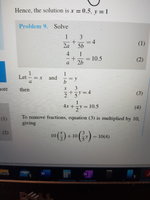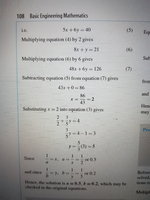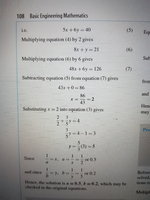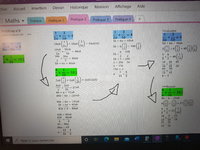Yuseph
Junior Member
- Joined
- Aug 5, 2020
- Messages
- 68
Hey guys wussup,
I had to stop there because I accumulated two sticking points.
1) the author never explained why he sometimes used a substraction and why sometimes an addition. Is it simply a matter of whether one of the letter is gonna be removed at the end. Or is there a case where you use substraction and another only addition ?
2) why does the guy bother with his letter replacements ? I dont care about that i want to cross multiply quickly and finish with the stuff. Is he right or not ?
3) why am I not getting the same result as him ? It is the author who lost himself with his replacement stuff or am I doing sth wrong ?



I had to stop there because I accumulated two sticking points.
1) the author never explained why he sometimes used a substraction and why sometimes an addition. Is it simply a matter of whether one of the letter is gonna be removed at the end. Or is there a case where you use substraction and another only addition ?
2) why does the guy bother with his letter replacements ? I dont care about that i want to cross multiply quickly and finish with the stuff. Is he right or not ?
3) why am I not getting the same result as him ? It is the author who lost himself with his replacement stuff or am I doing sth wrong ?





